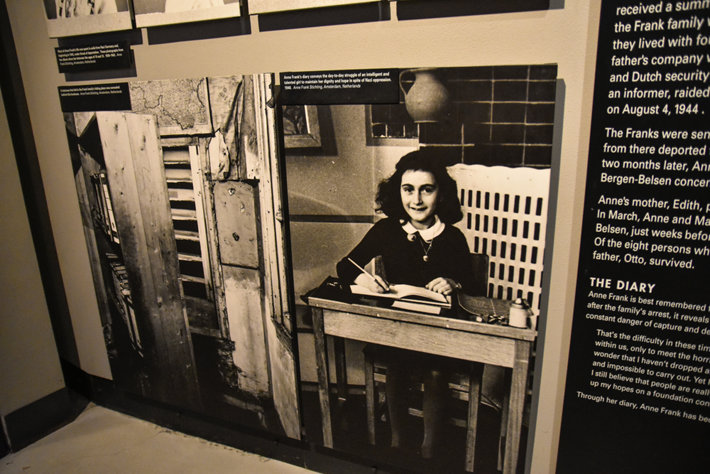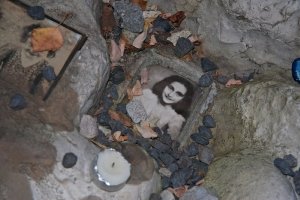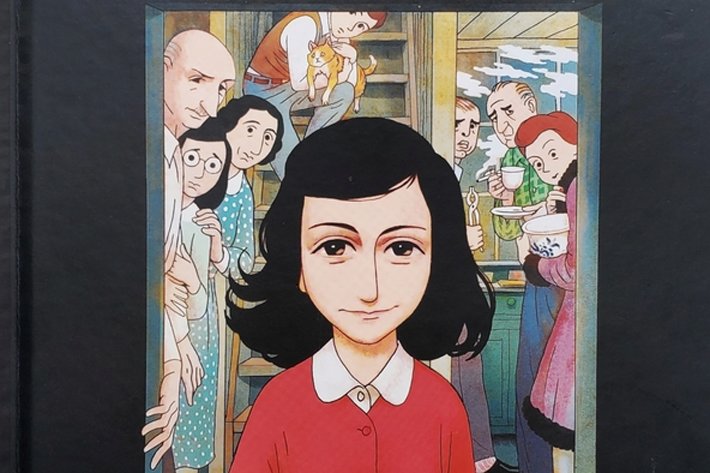Two little girls play in the sandbox—best friends, inseparable, playing pranks, sharing confidences, giggling at secret jokes. The photo of the two—Anne Frank, the most famous child of the 20th century, whose diary is known by millions as the definitive document of the Holocaust; and her best friend Hannah-Elizabeth Pick-Goslar—has survived the decades, a reminder of a joy that once was but can never be recovered.

Hannah Pick-Goslar, nicknamed Hanneli, who died October 28th at 93, was the world’s last living link to Anne Frank. As children they hit it off instantly. Hanneli, age 5, and Anne, age 4, spotted one another the first day of kindergarten and, as Ms. Pick-Goslar described it years later, Anne “turned around and ran into my arms and I ran into hers, and from then on we were friends.”
Hanneli plays a key part in Anne Frank’s diary. In one of her earliest entries, June 15, 1942, she writes, “Hanneli Goslar, or Lies as she’s called at school, is a bit on the strange side. She’s usually shy — outspoken at home, but reserved around other people. She blabs whatever you tell her to her mother. But she says what she thinks, and lately I’ve come to appreciate her a great deal.”
Quite unlike her friend, Anne was outspoken, a chatterbox. “My fiery Anne was ebullient, precocious, boy-crazy,” Hannah observed, adding that Anne was so insistent on her own point of view that it led Hannah’s mother to remark that “God knows everything, but Anne knows better.”
When the Franks went into hiding in July 1942, Mr. Frank left a note behind that the family had fled to Switzerland. Hanneli’s family would be arrested and sent away a year later. Anne, still in hiding and not knowing her friend’s fate, felt remorse about times she had mistreated or ignored her. In November 1943 she described a dream in which Hanneli came to her. “I saw her in front of me, clothed in rags, her face thin and worn. Her eyes were very big and she looked so sadly and reproachfully at me that I could read in her eyes: 'Oh, Anne, why have you deserted me? Help, oh, help me, rescue me from this hell!’”
Then in December another dream: “Dear God, watch over her and bring her back to us. Hanneli, you’re a reminder of what my fate might have been. I keep seeing myself in your place.”
The Franks were discovered, arrested and sent away—Anne and her sister to Auschwitz—on August 4, 1944. Some months later the sisters were transferred to Bergen-Belsen concentration camp in northern Germany, the same camp where Hanneli was imprisoned.
As Hannah describes it in the documentary, That’s What I Hope, “There’s a rumor that 7,000 women are coming to the camp. There’s no room to house them so the Germans set up big tents for them. Then someone tells me, ‘Your friend Anna Frank is here.’ I couldn’t believe it. We all thought they had gone to Switzerland. At night I tried to go as near as I could to the [barbed wire] fence [stuffed with matting so the prisoners couldn’t see each other through it].
“And somehow I call: ‘Hello? Hello?’ And a woman answers me. It was Mrs. Van Pels, the woman who was in hiding with Anne. We spoke half a minute—it was too dangerous. And she only said to me, ‘Oh you want Anne?’ And she went, and after seven minutes or so she came back with Anne.
“And really it was not Anne, the nice little girl I knew from Amsterdam. A sad little girl. The first thing, we both cried. ‘How do you come here?’ And I ask, ‘Are you not in Switzerland with Grandma?’ She said, ‘No, we never went to Switzerland, we were in hiding in Daddy’s office and we were betrayed.’ And then we spoke about the family, very short. I told her my father is very, very sick. And then she asked if I could help with some food. And so I said, ‘Anne, I will see what I can do. Come in two or three days.’ And really after three days I came with nothing, yes? But a lot. Some little football with some of the cookies—we got, you know, this bread you can keep for a long time—some of that, and some dried prunes, and I don’t remember, a piece of sugar. And we put something to wear, glove and socks. And I said, ‘Anne, careful, I throw it over the fence.’ But I couldn’t see her—I had to throw it by hearing. And there were a lot of other hungry women, and one of them caught the package and ran away with it, and Anne was shouting and crying, it was so sad. I had to calm her down. And then I said, ‘Anne, we will try again. Come again in two or three days.’ And we did it once again, and she caught the package but that was the end. We saw one another at the end of February but then we didn’t see each other anymore.”
In April of 1945 Hannah and her sister were among the 2,500 prisoners on a German train bound west to another camp, but the train was stopped outside a town in what later became East Germany. The German guards fled, leaving the emaciated passengers to be liberated by the Red Guard who later turned them over to the Americans. Back in Amsterdam that July Hannah found out from Otto Frank that Anne had died. In 1947 Hannah emigrated to pre-state Israel, where she was joined by her sister two years later. She trained as a nurse and cared for Israeli soldiers in combat zones during the War of Independence.
As mother, grandmother and great-grandmother, she would often reflect on how it all could have been different, with Anne the survivor bearing witness of her lost friend, Hannah.
“When I go and talk about the Holocaust,” Hannah said, “I say always that I think we are all created in the image of God and if we have another color or another religion or even another meaning, we should try to live more in peace together. That’s what I hope.”
From its beginnings, the Church of Scientology has recognized that freedom of religion is a fundamental human right. In a world where conflicts are often traceable to intolerance of others’ religious beliefs and practices, the Church has, for more than 50 years, made the preservation of religious liberty an overriding concern.
The Church publishes this blog to help create a better understanding of the freedom of religion and belief and provide news on religious freedom and issues affecting this freedom around the world.
The Founder of the Scientology religion is L. Ron Hubbard and Mr. David Miscavige is the religion’s ecclesiastical leader.
For more information visit the Scientology website or Scientology Network.


